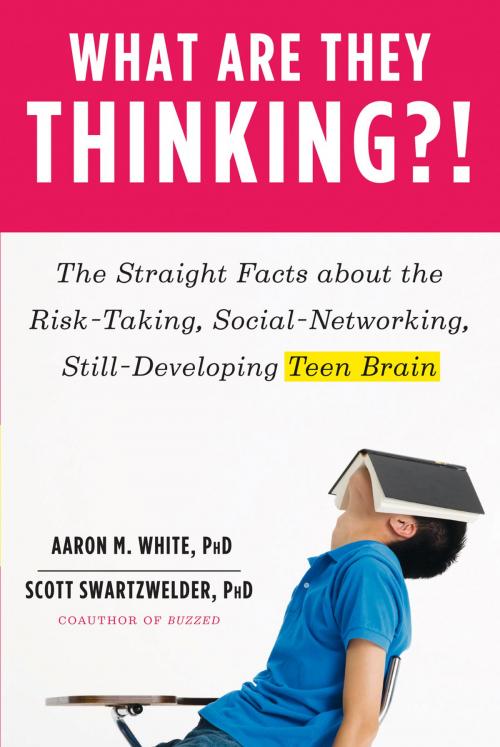What Are They Thinking?!: The Straight Facts about the Risk-Taking, Social-Networking, Still-Developing Teen Brain
Nonfiction, Health & Well Being, Psychology, Child & Adolescent, Adolescent Psychology, Family & Relationships, Adolescence| Author: | Aaron M. White, Ph.D., Scott Swartzwelder, Ph.D. | ISBN: | 9780393089950 |
| Publisher: | W. W. Norton & Company | Publication: | April 22, 2013 |
| Imprint: | W. W. Norton & Company | Language: | English |
| Author: | Aaron M. White, Ph.D., Scott Swartzwelder, Ph.D. |
| ISBN: | 9780393089950 |
| Publisher: | W. W. Norton & Company |
| Publication: | April 22, 2013 |
| Imprint: | W. W. Norton & Company |
| Language: | English |
Groundbreaking developments in adolescent brain research underpin this straightforward guide to understanding—and dealing with—teen behavior.
Adolescence has long been characterized as the “storm and stress” years, and with recent developments in digital communication, it seems today’s teens are in for a more complicated journey than ever before. Even the most sympathetic, “in-touch” parents might throw their hands up in frustration at their teen’s unpredictable and risky behavior and ask: what are they thinking?!
It turns out that teens’ thrill-seeking activities and quests for independence aren’t just the result of raging hormones, but rather typical effects of the unique structure and development of the adolescent brain. In easily navigable chapters full of practical anecdotes and examples, acclaimed scientists Aaron White and Scott Swartzwelder draw from the most recent studies on the teen brain to illuminate the complexities of issues such as school, driving, social networking, video games, and mental health in kids whose crucial brain connections are just coming online.
Groundbreaking developments in adolescent brain research underpin this straightforward guide to understanding—and dealing with—teen behavior.
Adolescence has long been characterized as the “storm and stress” years, and with recent developments in digital communication, it seems today’s teens are in for a more complicated journey than ever before. Even the most sympathetic, “in-touch” parents might throw their hands up in frustration at their teen’s unpredictable and risky behavior and ask: what are they thinking?!
It turns out that teens’ thrill-seeking activities and quests for independence aren’t just the result of raging hormones, but rather typical effects of the unique structure and development of the adolescent brain. In easily navigable chapters full of practical anecdotes and examples, acclaimed scientists Aaron White and Scott Swartzwelder draw from the most recent studies on the teen brain to illuminate the complexities of issues such as school, driving, social networking, video games, and mental health in kids whose crucial brain connections are just coming online.















